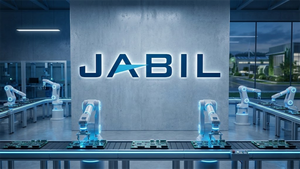
In a move that has sent ripples through the financial world and the booming artificial intelligence sector, Michael Burry, the legendary investor immortalized in "The Big Short" for his prescient bet against the 2008 housing market, has officially deregistered his hedge fund, Scion Asset Management. This dramatic exit from traditional money management, finalized on November 10, 2025, was swiftly followed by the launch of his new paid Substack newsletter, "Cassandra Unchained," where he has wasted no time in articulating his gravest concern: a rapidly inflating AI bubble. Burry’s latest pronouncements, delivered just days before the current date of November 24, 2025, serve as a stark warning, challenging the prevailing euphoria surrounding AI investments and raising uncomfortable questions about the sustainability of the current tech market rally.
Burry's pivot from managing external capital to a more unconstrained platform underscores his conviction that the market is entering a precarious phase, reminiscent of past speculative manias. His decision to deregister Scion Asset Management, which managed approximately $155 million earlier this year, was reportedly driven by a desire to shed the regulatory and compliance burdens that he felt "muzzled" his ability to communicate freely. Now, through "Cassandra Unchained," he is offering an unfiltered analysis, drawing parallels between the current AI frenzy and historical bubbles, and urging investors to exercise extreme caution.
Deconstructing Burry's Bearish Thesis: Accounting Gimmicks and Overstated Demand
Michael Burry's arguments against the AI boom are meticulously detailed and rooted in a critical examination of financial practices within the tech industry. His primary contention revolves around what he perceives as inflated earnings among major cloud and AI hyperscalers. Burry alleges that companies like Oracle (NYSE: ORCL) and Meta (NASDAQ: META) are artificially boosting their reported profits by extending the "useful life" of their rapidly evolving AI hardware, particularly GPUs, on their balance sheets. Instead of depreciating these high-cost, fast-obsolescing assets over a more realistic three-year period, he claims they are stretching it to five or even six years. According to Burry's estimates, this accounting maneuver could lead to an understatement of depreciation by approximately $176 billion between 2026 and 2028, resulting in significant overstatements of earnings – potentially around 27% for Oracle and 21% for Meta by 2028.
Beyond accounting practices, Burry casts a skeptical eye on the genuine demand for AI technologies, labeling it "laughably small." He suggests that much of the reported AI growth is a "self-reinforcing loop" where "customers are funded by their suppliers," creating an illusion of robust market demand that doesn't reflect true end-user adoption. He has specifically cited investment agreements between tech giants such as Microsoft (NASDAQ: MSFT), OpenAI, Oracle, and Nvidia (NASDAQ: NVDA) as examples of questionable revenue recognition practices that obscure the true financial picture. This perspective challenges the narrative of insatiable demand for AI infrastructure and services that has driven valuations to unprecedented heights.
Furthermore, Burry draws ominous parallels between the current AI surge and past speculative bubbles, notably the dot-com era of the late 1990s and the 2008 housing market crisis. He points to U.S. capital expenditure (capex) to GDP ratios, which are reportedly reaching levels last seen before those major market downturns. This indicates an unsustainable cycle of heavy corporate spending, even as market peaks approach. He also highlights the significant concentration risk within the market, where a handful of AI-linked stocks now account for over 30% of the S&P 500's total market value, making the broader market exceedingly vulnerable to a correction should these key players falter. While his warnings have sparked debate, the financial community remains divided, with some acknowledging his historical foresight and others pointing to his mixed track record since "The Big Short."
Competitive Implications and Market Positioning in a Shifting Landscape
Michael Burry's dire warnings, if they prove accurate, carry profound implications for the competitive landscape of AI companies, established tech giants, and emerging startups. Companies heavily invested in AI infrastructure and development, such as Nvidia (NASDAQ: NVDA), a leading supplier of AI chips, and cloud providers like Microsoft (NASDAQ: MSFT), Amazon (NASDAQ: AMZN), and Google (NASDAQ: GOOGL), whose growth is tied to AI spending, could face significant headwinds. Burry's depreciation arguments directly target their financial reporting, suggesting that their profitability might be less robust than currently portrayed, which could lead to investor reevaluation and potential stock corrections.
The competitive implications extend to the strategic advantages these companies are aggressively pursuing. Microsoft's deep integration with OpenAI, Google's advancements with Gemini, and Amazon's development of its own AI capabilities are all predicated on a sustained, high-growth AI market. If Burry's "overstated demand" thesis holds true, the race for AI dominance could become a zero-sum game, with less genuine demand to go around. This could disrupt existing products and services, forcing companies to re-evaluate their AI investment strategies and focus more intensely on demonstrable return on investment (ROI) rather than speculative growth.
Initial reactions to Burry's positions have been mixed. While some investors reportedly took substantial put positions against AI-heavy companies like Nvidia and Palantir (NYSE: PLTR) following his earlier hints, causing temporary dips, the market has also shown resilience. Nvidia's CEO, Jensen Huang, has publicly dismissed the notion of an AI bubble, citing strong demand and a clear path for AI's integration across industries. Palantir's CEO, Alex Karp, famously called Burry "batsh*t crazy" for betting against his company. This divergence of opinion underscores the high stakes involved and the difficulty in predicting the trajectory of a rapidly evolving technological paradigm. However, Burry's reputation ensures that his contrarian views will continue to fuel debate and influence a segment of the market, potentially leading to increased scrutiny of AI valuations and a more cautious approach to investment in the sector.
The Broader AI Landscape: Echoes of Past Manias and Future Concerns
Burry's warnings resonate within a broader AI landscape characterized by both unprecedented innovation and growing apprehension. November 2025 has seen a surge in "agentic AI" systems capable of autonomous decision-making, advancements in generative AI with tools for text-to-3D world generation, and faster, smarter Large Language Models (LLMs) like OpenAI's GPT-5.1 and Google's Gemini 2.5/3 Pro. Major partnerships, such as Apple's (NASDAQ: AAPL) rumored integration of Gemini into Siri and the substantial $38 billion multi-year strategic partnership between AWS (NASDAQ: AMZN) and OpenAI, reflect massive capital inflows and a conviction in AI's transformative power. Nvidia, for example, recently became the first company to hit a $5 trillion valuation, underscoring the scale of investor enthusiasm.
However, this euphoria is increasingly tempered by concerns that echo Burry's sentiments. The market is witnessing a growing scrutiny over whether the colossal AI investments will yield profits commensurate with the spending. Reports indicate that some companies are spending more than their entire operating cash flow on data center expansion, often relying on debt financing. This raises questions about financial sustainability, particularly as stock market volatility has returned, with some "Wall Street's favorite AI stocks" experiencing falls. The Federal Reserve's stance on interest rates also looms as a significant factor that could influence the AI rally.
The wider significance of Burry's perspective lies in its potential to act as a crucial counter-narrative to the prevailing optimism. Comparisons to past bubbles, such as the dot-com bust, serve as a potent reminder of how quickly market sentiment can turn when speculative valuations outpace fundamental realities. Concerns about concentration risk, where a few dominant AI players dictate market direction, add another layer of fragility. While AI promises revolutionary advancements in healthcare, environmental monitoring, and public safety, the financial underpinnings of this boom are now under the microscope. The tension between rapid innovation and the need for sustainable, profitable growth is a defining characteristic of the current AI era, and Burry's voice amplifies the critical need for caution amidst the excitement.
The Road Ahead: Navigating the AI Investment Terrain
The coming months will be critical in determining whether Michael Burry's warnings manifest into a significant market correction or if the AI sector continues its upward trajectory, defying his bearish outlook. Near-term developments will likely involve continued scrutiny of the financial reporting of major AI players, particularly regarding depreciation schedules and revenue recognition practices. Should more analysts begin to echo Burry's concerns, it could trigger a re-evaluation of current valuations and lead to increased volatility in AI-heavy stocks. The market will also keenly watch for any signs of slowing capital expenditure or a pullback in investment from venture capitalists, which could signal a cooling of the overall AI funding environment.
In the long term, the future of AI investment will hinge on the ability of companies to demonstrate clear, scalable pathways to profitability. The current emphasis on "intelligent growth, technology-enabled efficiency, and clear pathways to sustainable profitability" will intensify. While the potential applications and use cases for AI remain vast and transformative—from advanced drug discovery and personalized medicine to autonomous research agents and enhanced cybersecurity—the economic realities of deploying and monetizing these technologies will come under greater scrutiny. Challenges such as power constraints, which could slow AI spending, and the increasing demand for specialized AI talent will also need to be addressed effectively.
Experts are divided on what happens next. Many still believe in the long-term growth story of AI, advocating for buying tech stocks and AI winners for a multi-year cycle. However, a growing chorus of cautious voices, now amplified by Burry, suggests that the market may be overextended. What to watch for in the coming weeks and months includes corporate earnings reports, particularly those from cloud providers and chip manufacturers, for any indications of slowing growth or increased costs. Additionally, regulatory developments, such as the EU's Artificial Intelligence Act and India's proposed AI labeling rules, could introduce new variables, potentially impacting innovation or market access. The interplay between technological advancement, financial prudence, and regulatory oversight will shape the next chapter of the AI revolution.
A Crucial Crossroads for AI Investment
Michael Burry's emergence as a vocal critic of the AI boom, following the strategic deregistration of his hedge fund and the launch of his "Cassandra Unchained" newsletter, marks a significant moment in the ongoing narrative of artificial intelligence. His detailed arguments, from inflated earnings through accounting practices to overstated demand and historical parallels with past speculative bubbles, serve as a potent counterpoint to the pervasive optimism. This development is particularly significant given his track record of identifying systemic market vulnerabilities, positioning his current stance as a crucial assessment of the AI sector's health.
The significance of this development in AI history lies not in a technological breakthrough, but in a financial one – a potential warning of an impending correction in the valuations that underpin the AI revolution. While AI continues its rapid march forward with breakthroughs in agentic systems, generative models, and real-world applications across industries, Burry's analysis forces a critical examination of the economic foundations supporting this progress. His warnings compel investors and industry leaders to look beyond the hype and assess the true financial sustainability of the AI ecosystem.
Looking ahead, the long-term impact of Burry's pronouncements could be multifaceted. It might instigate a period of greater market skepticism, leading to more rational valuations and a renewed focus on profitability over speculative growth. Alternatively, the market might dismiss his warnings, continuing its upward trajectory fueled by genuine technological advancements and adoption. What to watch for in the coming weeks and months includes how major tech companies respond to these criticisms, the continued performance of AI-heavy stocks, and any shifts in institutional investor sentiment. The debate ignited by Michael Burry will undoubtedly shape how the world perceives and invests in the transformative power of artificial intelligence.
This content is intended for informational purposes only and represents analysis of current AI developments.
TokenRing AI delivers enterprise-grade solutions for multi-agent AI workflow orchestration, AI-powered development tools, and seamless remote collaboration platforms.
For more information, visit https://www.tokenring.ai/.





